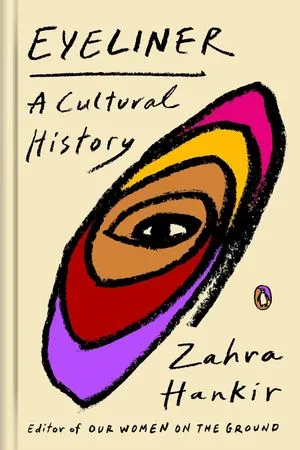
New Nonfiction by Women
We’re kicking off Women’s History Month with some book club-worthy nonfiction books by women. These books were released within the last few months and will take you everywhere — from the frontlines of the fight for trans lives to ancient Greece to the typewriter of a Southern genius.
But first, as always, a few nibbles.
Nibbles and Sips
I’m a seasonal girlie, and so, even though spring hasn’t officially sprung just yet, I am very much into the seasonal fare. These pastries look easy enough to make and seem like a perfectly light and sweet handheld treat.
You’ll need: puff pastry, strawberries, whipped cream (you’ll need vanilla, heavy cream, and powdered sugar if you’re making homemade whip), and powdered sugar.
Use a cookie cutter to cut out pastry shapes, then bake at 400 for 10 minutes or so. For full instructions and a video, visit Deborah Trette’s Instagram.

Creep: Accusations and Confessions by Myriam Gurba
With this collection of essays, Gurba is snatching edges. She looks in depth at creeps — the actions and people who we actively label as “creeps,” as well as things that we maybe should. Instead of looking just at the more offensive, overt actions, Gurba also looks at things that are taken less seriously but are on the same spectrum. People who commit sexual assault and get away with murder are creeps, but so is the society that lets them. Gurba also makes this collection personal, weaving in pieces of her own story throughout, including her experiences with sexual assault. She even reckons with sources of inspiration and how they’ve missed the mark (specifically Joan Didion and how little she’s had to say on Indigenous populations as a California writer).

The Risk It Takes to Bloom: On Life and Liberation by Raquel Willis
In this memoir, Willis recounts her life. She grew up feeling isolated in Augusta, Georgia as a queer Black child, despite her supportive family. It wouldn’t be until going to college and finding a queer community that she began to explore herself and her identity. As she entered the field of journalism, the Black Lives Matter movement started gaining steam, and the trans community was getting more visibility. Becoming aware of the threat to trans lives, especially those of trans teens and trans women of color, led to her coming out as trans and becoming a voice for the voiceless.

Divine Might: Goddesses in Greek Myth by Natalie Haynes
After her popular fictional Greek retellings — like A Thousand Ships and Stone Blind — Haynes turns her attention to the depictions of the Greek goddesses who have inspired so many. Some may say she takes a female-centered perspective in analyzing the motivations of the mythological figures she discusses, but I’d counter that she’s just being more objective when looking at the lives of figures like Hera, Artemis, Aphrodite, and others.

Carson McCullers: A Life by Mary V. Dearborn
McCullers is one of my favorite Southern writers, and just writers ever. I remember being amazed at how well she could write from the perspective of those who had experiences so outside of her own at such a young age (23, if we’re thinking of The Heart Is a Lonely Hunter). This is the first biography of the genius author in the last couple of decades, and it details her life — from the time she thought she’d be a concert pianist to her inherent queerness — referencing materials unavailable until the last decade or so.
Suggestion Section
Book Club Tings:
A list of book club-friendly questions
- Roxane Gay: Wandering Stars by Tommy Orange
- Erin and Dani’s Indigenous Reading Circle: Solar Storms by Linda Hogan
- Jenna Bush Hager/ The Today Show: The Great Divide by Cristina Henriquez and The House on Mango Street by Sandra Cisneros
- Mocha Girls Read: A Woman is No Man by Etaf Rum
- Reese: Anita de Monte Laughs Last by Xochitl Gonzalez
- The Stacks: Interior Chinatown by Charles Yu
- Dua Lipa/Service 95: Trust by Hernan Diaz
More To Read
8 of the Best Sci-Fi Novellas To Read In One Sitting
Kind of a Big Reel: 8 Blockbuster Science Fiction and Fantasy Books Becoming Films
Andrew Scott Is Handsome and Creepy AF in the New Trailer for Netflix’s ‘Ripley’
A Purr-fect Program: A Massachusetts Public Library Is Waiving Fines When Shown A Cat Photo
**Below is an extended list for subscribers**

Shakespeare’s Sisters: How Women Wrote the Renaissance by Ramie Targoff (March 12)
With Shakespeare’s Sisters, we learn about the female contemporaries of the Bard who wrote during a time when women were considered to be the literal property of men. The stories of the women here — which include Aemilia Lanyer, the first woman to publish a collection of poetry in the 17th century; and Anne Clifford, who fought back against having her land taken away — will have you rethinking how you view the European Renaissance.

Not Your China Doll: The Wild and Shimmering Life of Anna May Wong by Katie Gee Salisbury (March 12)
Anna May Wong was That Girl. She went from growing up in her family’s laundry business to becoming a Hollywood star. After her breakout role in The Thief of Bagdad, people wanted more of her, but the powers that be only offered her stereotypical roles. So, she took to Europe and starred in hit film after hit film, and broke heart after heart across the continent. She later used all her influence to denounce the blatant racism of Hollywood and campaigned for better treatment of Asian Americans by the entertainment industry.

Dispersals: On Plants, Borders, and Belonging by Jessica J. Lee (March 12)
In these 14 essays, award-winning Lee uses lyrical prose to look at the parallels between plant life and human life and how the two intersect and influence each other. With a blend of personal history, collective history, and science, she considers what it means for a plant — including everything from weeds to plants collected in the name of imperial science — to be out of place.

Eyeliner: A Cultural History by Zahra Hankir
From nomads in Chad to geishas in Japan and drag queens in New York City, eyeliner is one of the most enduring kinds of makeup that has appealed to different cultures across time periods. Here, Hankir looks at the cosmetic product’s history through the ages, showing how its application has denoted religious affiliation, acted as a shield from the sun, and even warded off evil spirits.
The comments section is moderated according to our community guidelines. Please check them out so we can maintain a safe and supportive community of readers.
The comments section is moderated according to our community guidelines. Please check them out so we can maintain a safe and supportive community of readers!







Leave a comment
Become an All Access member to add comments